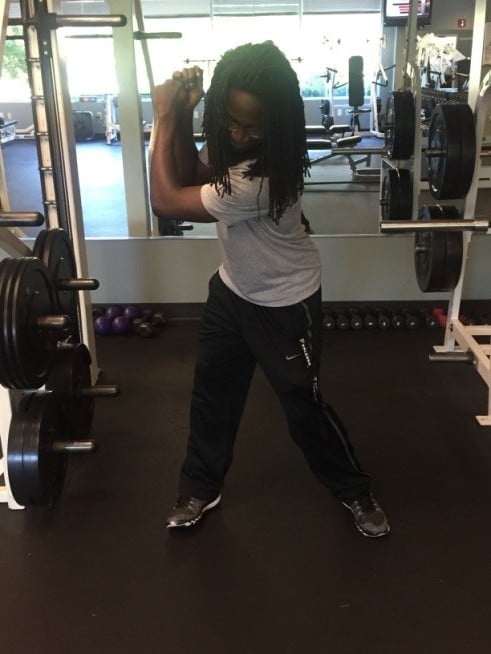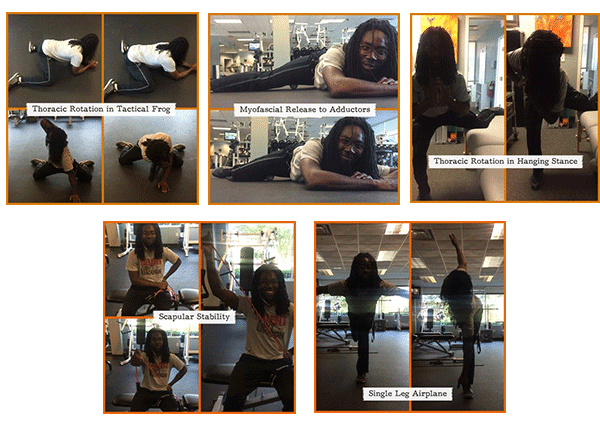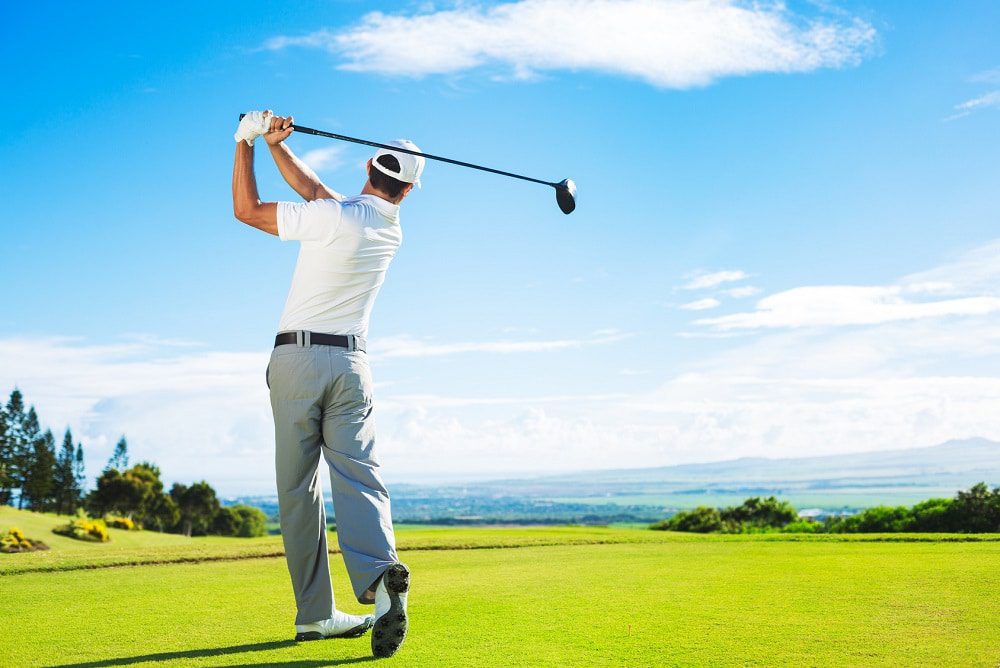Improve Your Golf Swing with These Simple Drills
We all want to add a few yards to our golf swing, but where should we begin? If you're looking for an advantage over your golf buddies, you may want to consider adding core stability and hip mobility to your workout program.
Amateur or recreational golfers often take to the driving range and might visit a gym on the weekend, but are they doing exercises that will directly correlate to improving their golf swing?
The Proper Golf Swing
During the backswing, the shoulders and hips should rotate simultaneously with each other, which requires substantial flexibility of the adductors (inner thigh muscles), core stability (to maintain rib and pelvis interaction), thoracic spine rotational flexibility, shoulder blade stability, and shoulder mobility.
In order to rotate into the backswing without increasing the torque through your lower back and potentially compromising the structures, the pelvis should be able to move on top of the femur (thigh bone), which requires flexibility through the adductors and stability from the glutes and hip flexors.

Figure 1: Improper Golf Swing – notice torque at the knee, asymmetrical balance distribution, and lumbar spine rotation, which cumulatively causes larger variable in force production, and inconsistent swing mechanisms.

Figure 2: Proper Golf Swing – notice the balance across both feet, opening of the adductors on the L side, thoracic rotation, and lumbar stabilization.
The downswing should feel like a pulling motion toward the lead foot, starting with a weight shift onto that foot, and using the power stored during the backswing to release the energy forward through the ball. By maintaining stability in your lower back, and not allowing the shoulders and pelvis to counter-rotate in relation to each other, your swing will be more efficient.
Exercises for Improving Your Golf Swing
Here are five exercises that are easy to implement, and will have that ball flying further and straighter than before!
1. Mobility: Thoracic Rotation in Tactical Frog
- Start on all fours, take your knees as wide as you can, and drop down to elbows.
- Rotate feet so the insides are touching the ground.
- Rock your hips back without tucking your tail under for an adductor (groin) stretch.
- Post up on one hand and place the other behind your head.
- Rotate your elbow toward the ceiling while pressing the opposite hand into the floor as far as you can without shifting your hips, then rotate your elbow under your body toward the opposite elbow.
2. Mobility: Foam Roller Myofascial Release for Adductors
- Place a foam roller, tennis ball or lacrosse ball under your inner thigh, halfway between your knee and hip.
- Rotate your foot out to the side and back and forth.
- Move the ball toward your knee or toward your hip to work through the length of the muscle.
3. Mobility: Hanging Stance Thoracic Rotation (progression from Tactical Frog)
- Stand with one leg propped on an elevated surface and rotate so the inside of your foot is on the surface.
- Slightly bend the stance knee and rotate your knee toward the outside of your foot.
- Place your hands in 'prayer' position, and rotate away from the leg that is propped up.
4. Stability: Scapular Stability PNF
- Place both hands slightly wider than hip width on a Thera-Band® or elastic tubing.
- Start with both hands at one hip and rotate your dominant hand up toward the sky as you pull across your body, similar to the motion of drawing a sword.
- End with the thumb pointing behind you, and relax your shoulder away from your ear. Do NOT go further than when your ribs start to pop forward – that is your end range.
5. Stability: Single Leg 'Airplane'
- Stand on one leg and lift the opposite leg off the ground as you hinge forward.
- Keeping your shoulders and hip aligned, rotate the shoulder and hip of the elevated leg toward the ceiling, then back to the floor (do not let the shoulders and hips become oblique or out of sync as you rotate).

If your golf swing is not as impressive as you're hoping for, reach out to your SetPT physical therapist today to learn more about strategies and exercises for improving your golf game.





